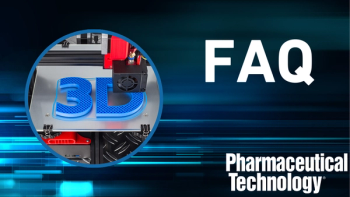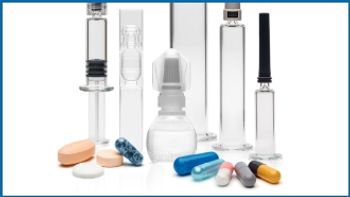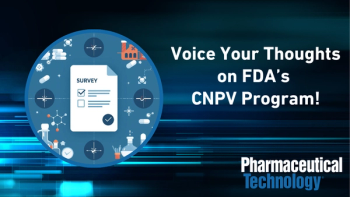
Engineering trends and developments in lyophilization
Lyophilization is an expensive process that demands high investments in technology, but for many products, pharmaceutical freeze drying is currently the only method to ensure durability.
Lyophilisation is an expensive process that demands high investments in technology, but for many products, pharmaceutical freeze drying is currently the only method to ensure durability. The high costs associated with this process, however, have provided companies with incentives to find ways of making lyophilisation more economical and efficient.
Reducing costs and time
Freeze-drying systems can contain tons of stainless steel that has to be heated and cooled. One obvious way to reduce costs is to reduce the overall dimensions of freeze dryers — of both the containers and interior modules because the larger the dimensions, the more energy is required, which is costly. Because of this, there has been a move to provide systems with improved control units and optimised dimensions.
The dimensions of a freeze dryer also affect turnover times; extensive use of steel means longer times for heating, which is used to sterilise the freeze dryer between batches. The freeze dryer must also be cooled down again afterwards and, again, big masses are counterproductive. Once a batch is completed, the user wants to be able to load a new batch as quickly as possible. Before the new batch can be loaded though, an internal washing cycle, followed by a sterilisation cycle (clean in place/steam in place) needs to conducted. Heating the container sterilises it, but the container is heat‑insulated on the outside, which is counterproductive and time-consuming. However, we have developed a ‘jacket’ to cool the stainless‑steel housing from outside. Without this jacket, the cooling time is 8–10 h; with the jacket, the time for re-establishing the operational state is reduced to 3 h.
Before batches enter the freeze‑drying system, the machine needs to be checked to ensure that it is working; this takes time. For all phases combined, the latest lyophilisation machines can reduce the overall turnover time from 1620 h to 810 h, depending on machine size. New systems also automate the testing of all functions, and offer improved software and control units.
Hygiene and processes
Although no direct contact takes place, carry-over of the product to certain assembly parts is unavoidable during the freeze‑drying process. During lyophilisation, water vapour is generated from sublimation, giving rise to very high flow velocities. During this process, it is impossible to prevent particles from being carried over and being present, for example, in a vacuum pump unit. Fortunately, this contamination can now be controlled using automated cleaning systems for both the containers (i.e., the internal parts of the chambers) and the peripheral components (e.g., a pumping station).
PAT has changed the methods used to monitor the lyophilisation process and test the final product. Previously, appropriate equipment monitored processes while they were happening and the final product quality could be tested only after the manufacturing process. Today, we have more frequent and direct controls during the manufacturing process itself; that is, special analytical methods designed to improve product quality. Today, it is possible to measure the temperature of the pharmaceutical product while the freeze-drying process is taking place. It is also possible to control the humidity and composition of gases in the drying chamber and comparative measurements of pressures can also be conducted. All of these analytical procedures are suited for determining the efficiency of the process and lead to greater transparency for the operator.
New lyophilisation processes are developed using pilot lines. Here, the sampling and sample sealing units have been developed further. Up until now, only sampling systems have been docked onto a pilot line, whereby samples were taken after a particular process cycle, placed in an airlock and removed completely for examination. Now, samples are sealed within the chamber of the freeze-drying system, which allows each bottle to be sealed individually at its complete level at a specified time and analysis to be performed later. It is no longer necessary to install a complex and expensive sampling system. These pilot lines, including the fitted isolators, also guarantee hydrogen peroxide vapour (VHP) sterilisability.
Environmental protection
Until recently, freeze drying was executed without keeping an eye on resources because safety was the only goal. Today, safety is still the absolute primary goal, but environmental protection has also become important. Indeed, the greatest development potential in pharma lyophilisation today lies in reducing energy and resource consumption. In particular, water, nitrogen and compressor engineering offer enormous potential for significantly reducing process costs. Therefore, wherever possible, without affecting safety, processing times, consumables and masses of the freeze dryers are reduced. It is only in recent years that a great deal of attention has been devoted to reducing energy and resource consumption and, as such, approaches are still relatively new.
Energy savings can be achieved by using alternative methods to steam sterilisation. Steam sterilisation involves placing a line under steam pressure, heating it with previously generated steam, maintaining the pressure for a certain time and then cooling it down because the product has to be brought back into a cold line. As steam sterilisation means heating and cooling down the freeze dryer, there are increasing efforts to employ hydrogen peroxide to achieve energy savings.Other environmental approaches to freeze drying involve substituting greenhouse gases with natural coolants, such as ethane and propane. These can be used in freeze dryers within closed circuits as cascade cooling. However, there are disadvantages of natural coolants that must be taken into consideration; some are partly combustible, explosive and, therefore, need to be kept in defined atmospheres. These substances are not yet commercially available and are still being evaluated in R&D testing.
Based on a contribution by Franz Bosshammer, Business Manager at the Mornshausen site of Optima Group Pharma.
Newsletter
Get the essential updates shaping the future of pharma manufacturing and compliance—subscribe today to Pharmaceutical Technology and never miss a breakthrough.





